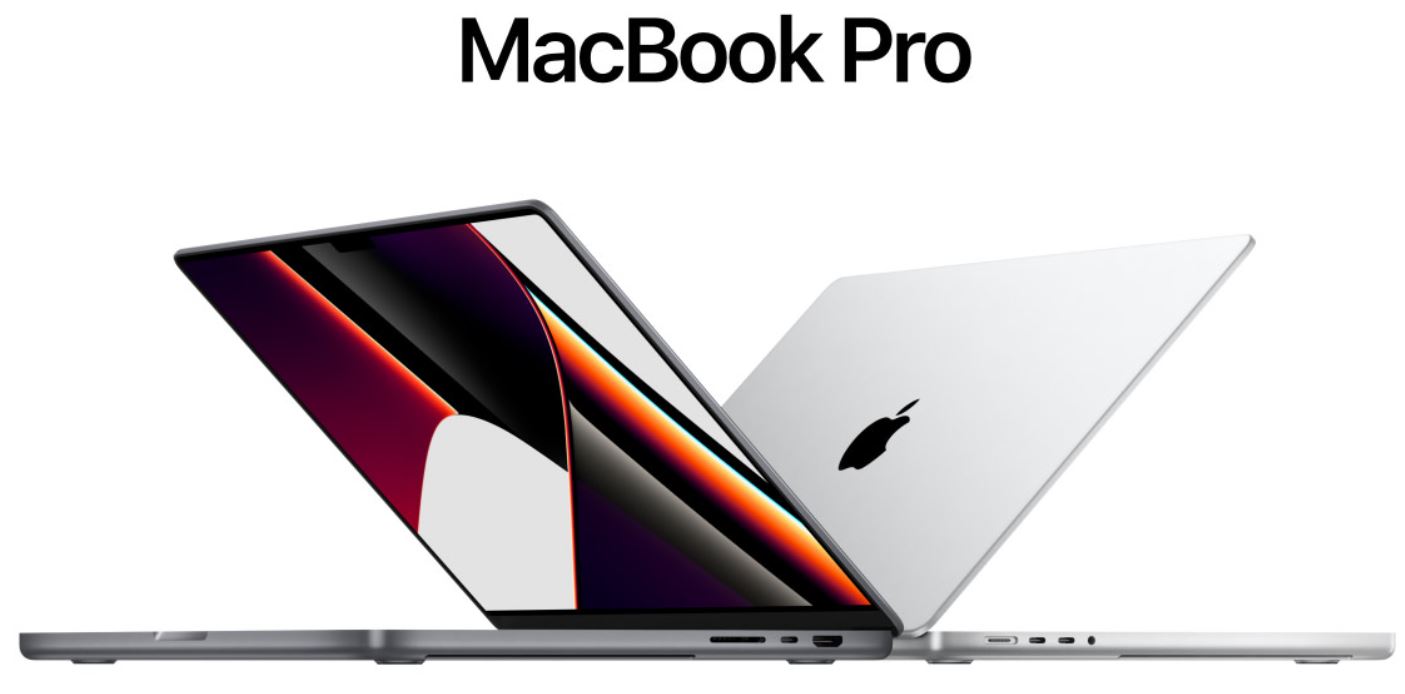The MacBook Pro Series got a tremendously significant revamp in 2021. Apple announced their switch to Apple Silicon powered MacBooks in 2020. Instead of using outsourced chips from Intel, they decided to make their chip designs using TSMC fabs. GPUs are now made in-house instead of relying on AMD.
Apple’s in-house chips for their laptops are built on ARM fabrication. The CPU, GPU, RAM, and Storage are soldered into one microchip. This enables effective communication between laptop parts and boosts overall performance. This results in better power efficiency as well.
Update January 17: Apple has launched a new 14-inch and 16-inch MacBook Pro. Both devices arrive with the company’s latest M2 Pro and M2 Max chipsets. The new 14-inch MacBook Pro (M2 Pro) starts at $1,999, and the 16-inch model starts (M2 Pro) at $2,499. MacBook Pro 14-inch M2 Max starts at $3099 while the 16-inch M2 Max model starts at $3499 in the US. You can order new MacBook Pro models from January 17 through the Apple website. However, Apple will ship starting Tuesday, January 24, 2023.
ARM isn’t perfect since it lacks proper dual boot capability, and none of the internal components, like RAM or storage, can be manually upgraded. Repair costs are pretty high, too. There are three primary reasons for Apple to move to their chips.
One, they could have more control over the upgrades each year. Until 2020, Intel’s yearly gains were unpredictable and insignificant. A difference in promise and delivery led to MacBooks with severe heating problems. The entire system was inefficient. But if Apple switches to their chips, they can control the number of performance boosts they want to do each year.
Two, Apple can beautifully integrate its software and hardware. If Apple’s chips are used, the components will be designed to work well with others while having better efficiency per watt.
Third, it gives Apple higher profit margins. They no longer have to pay a cut to Intel or AMD, so they’re now able to manufacture laptops with a cheaper production cost, but they still charge pretty high prices. This gives them higher profit margins per unit sold.
Apple might launch the next generation of MacBook Pros in the fall of 2023, powered by their latest chips. Apple aimed to transition all its products to Apple Silicon in two years. They were mostly successful, except for the Mac Pro. In this post, we’ll cover the expected price and specifications.

MacBook Pro 2023 Specifications
The laptops Apple launched in 2022 had significant upgrades to performance and display quality. They swapped to high-quality Mini LED 120Hz screens, considered industry-leading.
For the next generation of MacBook Pros, Apple might make iterative improvements to MiniLED technology that reduces blooming, increases brightness, and plays HDR content better. We might see resolution bumps, too. Iterative upgrades to all the essential laptop components will indeed be made.
Several reports point to improved RAM, more specifically, better bandwidth and speeds. LPDDR5X RAM is a decent improvement. It takes the current rates: 200 GBPS for the M1 Pro & 400 GBPS for the M1 Max, 300 GBPS for the M2 Pro & 600 GBPS for the M2 Max. The improvement can be noticed in daily use when transferring heavy files.
We might see an upgrade to 96GB of RAM for the flagship models. This is an upgrade from 64GB to the best M1 Max chip. We have already observed a similar trend. The M1 chip for the MacBook Air maxed out at 16GB RAM. But the M2 MacBook Air goes up to 24GB. For the M2 Pro chip, we’ll probably see up to 48GB, and 96 for the M2 Max.
GPU
The existing GPUs are powerful enough, and the upcoming ones are said to have more cores while being more efficient with power draw.
Going by Mark Gurman’s reports, the GPU is a point of focus this time. It makes sense since the M2 had a more significant boost in the GPU department instead of the CPU department. The number of cores went from 8 (at most) on the M1 to 10 for the M2.
If we analyze this pattern, the M2 Pro could move from 14/16 cores to 18/20 cores. The Max could go from 24/32 to 30/38 cores.
Note that these are initial assumptions. Since the actual launch is several months away, the accuracy of these predictions is currently unconfirmed.
CPU
A leaked MacBook has already appeared on Geekbench 5. It’s named Mac 14,6. In Multi-Core Performance, it scores 14,888. Earlier leaked scores portrayed a 13,855 score for the same model. The M1 Max MacBook Pro holds the current maximum score by a MacBook at ~12.100. The leaked scores are predicted to be of the twelve-core M2 Max chip.
Mark Gurman predicts that the M2 Max will have slight clock speed boosts and more cores. Two extra CPU cores will improve performance. However, the Geekbench 5 score improvement isn’t significant, so a difference in daily use might not be evident as far as peak performance under stress goes.
Battery life on MacBooks and their sustained performance when unplugged is awe-inspiring. We can expect the same from upcoming models. Battery life improvement might come from using more efficient chips.
3nm or 5nm?
A highlight feature for these MacBooks might be TSMC’s 3nm fabrication. The M1 is based on 5mm TSMC fabrication, and the M2 is based on the same. The A16 Bionic SOC for their iPhone 14 Pros moved to 4nm fabrication. We can expect the new MacBooks to make a move to 3nm.
The benefit of smaller transistors is that you can cram more of them into a smaller package, which improves CPU performance. Mass production of 3nm chips from TSMC might have already started in Q3 2022. If TSMC runs into further hurdles with the difficult-to-mass-produce 3nm chips, Apple might have to stick with an advanced 5nm fab for the M2 Pro and M2 Max chips.
Popular YouTuber Max Tech predicts that the sole reason why M2 hasn’t moved to 3nm is that the better fab is reserved for the Pro and Max. Since 5nm chips have a better yield rate, it’s better suited for mass production.
Apple has booked TSMC’s 3nm chips for the M2 Pro, M2 Max, and M3 chips, according to an older report from MacRumors.
Reliable leaker Ming-Chi Kuo predicts that if TSMC runs into trouble with the yield rate for mass-producing 3nm chips, Apple will stick to the 5nm advanced fab.
Design
For some reason, Apple decided to put a notch on their MacBooks. They moved from their older wedge-shaped design to a square design. They also brought some older ports back. The iconic scissor-switch keyboard works very well, unlike the awful butterfly keyboards.
The notch makes the laptops stand out among others but is a real eyesore. Since it lacks FaceID, the addition of a notch feels pointless.
For 2023 models, analysts expect this design to stick. No significant changes will be made on the outside.
MacBook Pro 2023 Price in the US
- The MacBook 2023 (14-inch) price could start at $2099, and the 16-inch model could start at 2599$.
The current 14-inch M1 Pro model in the USA starts at 1999$ for the 16GB+ 512GB variant with an 8 Core CPU & 14 Core GPU. The 16-inch model starts at 2499$.
Further upgrades to several CPU cores, RAM, moving from M1 Pro to Max, etc., will cost more money. It’s not likely that we’ll see a bump in price since the laptops are already crazy expensive.
However, Apple’s pricing is severely affected by the US Dollar value versus other currencies. Countries like the UK and the European Union might see price bumps, similar to what we see with the iPad lineup in 2022.
Should You Wait for the MacBook Pro 2023?
So far, the significant upgrades seem to be more RAM and cores for the CPU and GPU. A move to 3nm chips might improve battery life thanks to better efficiency.
Overall, the performance will not be a significant boost from the current models, which are plenty powerful already. If your workflow involves loads heavier than the M1 Max MacBook Pro, then that’s the only reason to wait several months more to get the newer models. Provided your existing laptop runs fine, waiting for the upgraded models makes sense.
What we want to see
The current lineup is solid, with good sustainability, battery life, and build quality. The trackpads, speakers, and keyboard are all the best in class. Better repairability, especially for the battery, would be a welcome change.
Improving the content consumption experience and user experience by eliminating the pointless notch. If not, we want them to add FaceID to give the notch a purpose.
macOS itself needs some major upgrades in 2023. Better multitasking with easy window snapping and management, built-in Universal Clipboard, etc., would dramatically improve the user experience.
MacBook Pro 2023 Release date
- The MacBook 2023 will likely be released in March 2023 at Sprint Event.
A funny thing about MacBooks? You never know when the next one is coming out. Just in the year 2020, we had two MacBook Air models. One was with an Intel i5 early in the year, and the late 2020 model had the M1 chip.
We saw no new MacBook Airs in 2021. The 14” and 16” Pro models got no upgrades in 2020, but they did in 2021. Since we saw no 14 or 16” Pro MacBooks launch in 2022, we can expect to see a refresh in the fall of 2023.
Some rumors point to a launch early in the year, sometime before March 2023. People expected new MacBook Pros to come out between September and December 2022, but that didn’t happen.
We have all the leaked Geekbench scores, which signify the laptop is in the testing stages. Mark Gurman predicts that they might launch as early as March 2023.
Note: This live article will update the latest information about the MacBook Pros.




